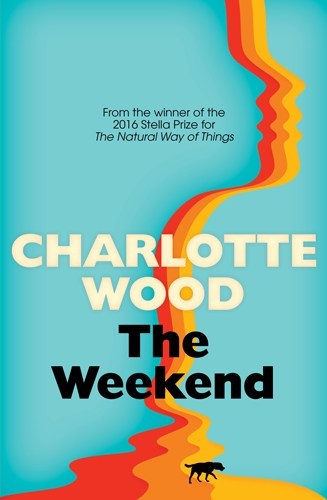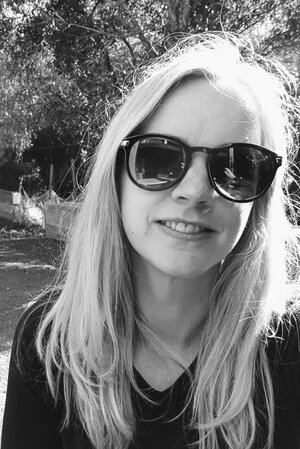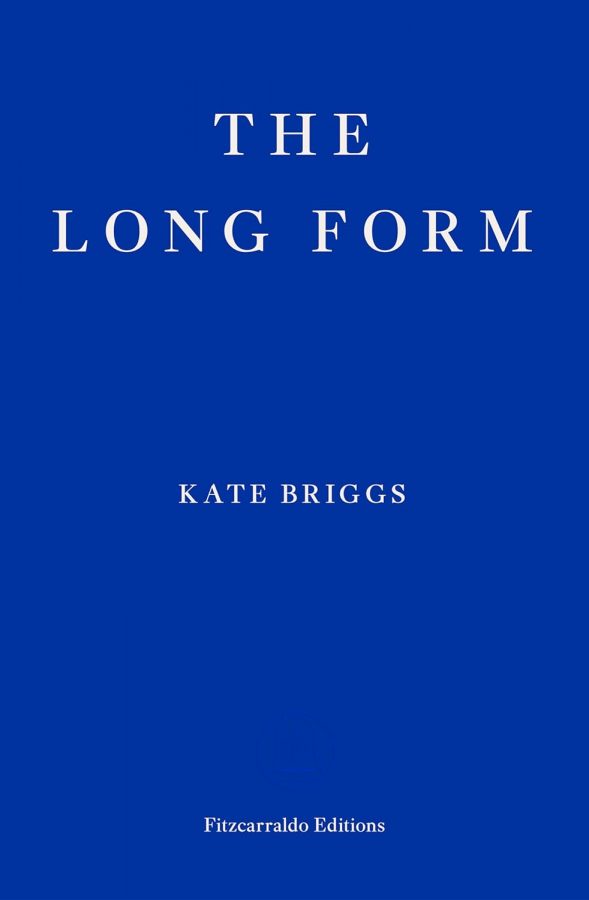In 2016 Charlotte Wood took up a position as Writer in Residence at the University of Sydney’s Charles Perkins Centre, as part of a multidisciplinary initiative to explore ‘the complex issue of aging’. The product of that residence is The Weekend, Wood’s sixth novel, and it comes highly anticipated on the heels of her 2016 Stella Prize-winner The Natural Way of Things.
The Weekend is the story of Jude, Wendy and Adele, three friends in their seventies brought together over Christmas to undertake the task of cleaning out a holiday house in Bittoes which belonged to a fourth friend, Sylvie, dead almost a year when the novel begins. Sorting through the detritus, they must decide what is worth keeping, not only of Sylvie’s possessions, but also of their friendship. Wood once again uses layered, alternating voices, as she did to such powerful effect in The Natural Way of Things, to reveal the contrast between each woman’s view of herself and the way she is seen by the others.
The first woman we meet is Jude, a former hospitality manager – or ‘glorified waitress’ as she is characterised in one bitter sideswipe – who lives a deliberately minimalist, solitary life. She is kept financially by Daniel, a wealthy man and one-time customer with whom she has had an affair going on forty years. This affair is the emotional centre of her life, but it is fiercely private; she has never spoken about it to her friends. Jude is by turns bossy and loyal, cruel and generous, intolerant and long-suffering. Her willingness to take responsibility doubles as a need to take control, and she demands gratitude for her efforts. Brittle and defensive, she is also heartbreakingly vulnerable. Watching Wendy and Adele wash away the sweaty, humid weather with a beach swim on their first day in Bittoes, we see the distance she imposes between herself and the world:
Even more, since Sylvie died, she knew she was not like them; she had not their capacity for abandon, for sharing.
Over the course of the weekend Jude will be forced to reckon with her grief: as her steely demeanour begins to slip, her body and mind to betray her. She sees Sylvie’s eyes in the decrepit, pitiful body of Wendy’s elderly dog, Finn, and seems on occasion to be unaware of conversations and events that are taking place around her.
Wendy is an academic and writer, and an influential public intellectual on the eve of a career renaissance. When we first encounter her, stuck on the side of the freeway in a broken-down car, her deaf, senile dog panicking on her lap in the searing heat, she appears a chaotic, helpless figure. Her ancient car, her house, and even her own body are all but taken over by the needs of Finn, who is far beyond rescue. Wendy is unable to bring herself to put him down, having been given him by Sylvie, for whom he acts as a kind of double.
As the novel progresses, Wendy develops into a more complex, less clearly sympathetic figure. Single-mindedly devoted to her work – to the detriment of her children, who have both distanced themselves from her in adulthood – she has let some crucial truths about life escape her notice. She is dismissive of those who have no ‘inner life’, who don’t know ‘how to think’, but there is an irony to her contempt; while her inner, or intellectual, life has yielded respect, acclaim, and fulfillment, it has also brought loneliness and estrangement. She has spent so long cataloguing experience, totting it up to be examined at leisure like an artifact, that she has lost something of its quality.
She felt ashamed, because it seemed to her that the rich detail of the world was precious, but she only knew this after it she had missed it. It had been the case all her life: when she recalled things, experiences […] she realised that she had not paid enough attention, and now those things were just outlines; gone. She’d recognised this before, but knowing it did not help. She spent her time storing up the detail while looking forward to the next thing, or worrying about it, knowing the details would be hers to return to now she had them accumulated, piled up and bunched together in her mind’s suitcase, but when she opened it there were only flat, lifeless scraps.
Like both Jude and Adele, Wendy sees herself as having had a unique connection with Sylvie; before the weekend is out she will be compelled to reassess this, and much else about her life.
The third woman, and the last to be introduced, is Adele, an actress in the twilight of a fairly successful (if not lucrative) theatre career, who is still ‘living like a drama student’ in her seventies. Just as she leaves for the weekend in Bittoes she is unceremoniously dumped by her younger partner, Liz, who has been paying her way for the previous year. Seeing herself as above material concerns, she is careless with money – as indeed she is careless with other people, though she firmly believes herself to be the most empathetic, the most human, of her friends. Adele’s lack of self-awareness is everywhere apparent; she laments the ‘vanity and cowardice’ that seeps from the television, all the while fastidiously maintaining her Instagram profile, terrified of her own irrelevance. Her childish vanity is so well-established that the other women leave her the best room without asking, and allow her to sleep the afternoon away while they clean. Nonetheless, her relentless optimism and generous spirit continue to draw them back to her.
The absent centre of the novel is Sylvie, remembered by the other women as the glue that held their four-piece friendship together. The origin of their mutual acquaintance is disposed of briefly: Wendy and Sylvie met at Oxford, they were regulars at a restaurant at which Jude held court, and which Adele would visit after her performances at the theatre next door. The scene is set with scant details, but the friendship itself has endured so long, that it hardly matters; the women themselves struggle to remember exactly how they met. Sylvie seems a woman for all seasons, loved by everyone, able to exert a kind of binding force even in death. Slowly we find that there was more to her than this – she too could be ‘careless with other people’s things’, could betray and disappoint.
This was something nobody talked about […] how you had to find a new arrangement among your friends, shuffling around the gap of the lost one, all of you suddenly mystified by how to be with one another.
As Jude, Wendy and Adele try to find a way to be together in Sylvie’s absence, their relationships shift and resettle, brief alliances forming and disintegrating. The patterns and the presumptions of long acquaintance calcify, so that each woman has no choice but to enact what is expected of her, to fit the role that has been carved out for her, and that she has carved for herself. Yet while the weekend brings moments of spite and frustration, these are balanced with moments of pure familiarity, and affection.
The two women’s faces turned upwards, to the sun, to Adele. At the same instant they each lifted a hand to shade their eyes, in a motion Adele had seen hundreds, thousands of times through all the decades of their friendship. She remembered them from long ago, two girls alive with purpose and beauty. Her love for them was inexplicable. It was almost bodily.
Wood can be unflinching in her depiction of her characters’ flaws, so that her reader must sometimes do some excavation to find their best qualities. Here she’s struck just the right balance: none of these women is always easily likeable, but each is drawn with insight and sensitivity.
The narrative has a taut, restless energy, and a burgeoning sense of claustrophobia. Jude is dreaming of Boxing Day, when Daniel will arrive; Wendy is eager to return home and begin work on her new book. Adele is perhaps the only one who really wants to be there, if for no other reason than that she now has nowhere else to go.
Two precipitating events compel us onwards: the first is an encounter with Adele’s artistic nemesis, the actress Sylvia Dreyfus and her toyboy, a theatre director named Joe Gillespie, in the street outside a local restaurant. The second is another, less straightforward meeting between Adele and Joe which will usher in the novel’s maelstrom-like denouement, replete with the spectre of a raging storm. Wood’s writing continues to grow in assurance which each new work: never fussy, but grounded, and intensely physical; she prefers metaphor to simile, and it lends her prose a sense of immediacy – that same urgency which made the dystopian vision of The Natural Way of Things so successful.
Wood is not afraid of dealing with weighty material: death, grief, age, and the loss of control – or the mirage that we ever had any control – over our bodies and the way they are perceived. She is not afraid to work with allegory, either: Finn, the dying dog, explicitly embodies a loss that must be acknowledged and let go; the raging storm brings to a head all that has been left unspoken throughout the weekend, and over the preceding decades.
The ghost creature Finn felt it too, looking on. He stood in the doorway, watching. Did he fear it? He knew it, the great gathering, the loosening of all things.
While some of this material could have been heavy-handed, Wood makes it work, revealing the outsized forces of nature, the irresistible tides and encroaching horrors, that are part and parcel of our experience of the world.
The Weekend is both about and not about aging. Yes, its three central characters are in their seventies, and each in her own way is dealing with the physical, cognitive and emotional effects of entering that period of life. Yet each is also emphatically the same woman she has always been, detesting the prejudices by which she is confronted simply because she has clocked up enough birthdays. Class and money are at play here too, for aging is an experience which, particularly for single women, can mean poverty. As Adele finds herself once again reliant on her charms to keep afloat, Wendy’s conclusion is blunt.
Nobody wants you when you’re old. You have to shore things up before this point. You have to face up to the future, to the worst possibilities, you have to prepare yourself. Anticipate, adapt, accept.
The topic is timely – Wood’s a writer with a fine sense of her cultural and political moment – as the demographics of our society undergo a seismic shift. She’s of course not alone in tackling this subject; Melanie Joosten’s 2016 collection A Long Time Coming, which explored the way that we perceive and treat the experience of aging, comes to mind, as do fictional depictions of dementia and Alzheimer’s in several recent novels (which Joosten discusses in her essay ‘Reading into Dementia: Empathy through Fiction’).
Speaking on the eve of her Charles Perkins Centre fellowship, Wood made clear that:
The characters in my book are not going to be frail little old ladies. I want to write a book where old people are the main characters, fully alive and thinking about the future and the present, not passively sitting around reflecting sadly on the glory days of their youth.
For Jude, Wendy and Adele, the sense of possibility, of opening up, of not being done yet, does not disappear with age – and why would it? Notwithstanding the indignities inflicted upon them, and assumptions made about them, solely because of their age, Wood has introduced us to three striving, difficult, vulnerable and engaging women, who are all very much alive.







